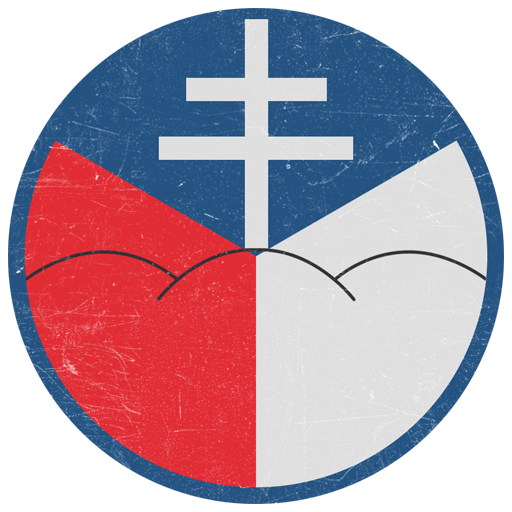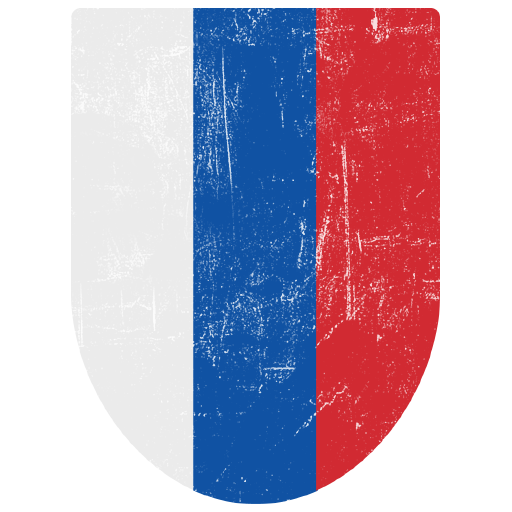
- For PC
- For MAC
- For Linux
- OS: Windows 10 (64 bit)
- Processor: Dual-Core 2.2 GHz
- Memory: 4GB
- Video Card: DirectX 11 level video card: AMD Radeon 77XX / NVIDIA GeForce GTX 660. The minimum supported resolution for the game is 720p.
- Network: Broadband Internet connection
- Hard Drive: 23.1 GB (Minimal client)
- OS: Windows 10/11 (64 bit)
- Processor: Intel Core i5 or Ryzen 5 3600 and better
- Memory: 16 GB and more
- Video Card: DirectX 11 level video card or higher and drivers: Nvidia GeForce 1060 and higher, Radeon RX 570 and higher
- Network: Broadband Internet connection
- Hard Drive: 75.9 GB (Full client)
- OS: Mac OS Big Sur 11.0 or newer
- Processor: Core i5, minimum 2.2GHz (Intel Xeon is not supported)
- Memory: 6 GB
- Video Card: Intel Iris Pro 5200 (Mac), or analog from AMD/Nvidia for Mac. Minimum supported resolution for the game is 720p with Metal support.
- Network: Broadband Internet connection
- Hard Drive: 22.1 GB (Minimal client)
- OS: Mac OS Big Sur 11.0 or newer
- Processor: Core i7 (Intel Xeon is not supported)
- Memory: 8 GB
- Video Card: Radeon Vega II or higher with Metal support.
- Network: Broadband Internet connection
- Hard Drive: 62.2 GB (Full client)
- OS: Most modern 64bit Linux distributions
- Processor: Dual-Core 2.4 GHz
- Memory: 4 GB
- Video Card: NVIDIA 660 with latest proprietary drivers (not older than 6 months) / similar AMD with latest proprietary drivers (not older than 6 months; the minimum supported resolution for the game is 720p) with Vulkan support.
- Network: Broadband Internet connection
- Hard Drive: 22.1 GB (Minimal client)
- OS: Ubuntu 20.04 64bit
- Processor: Intel Core i7
- Memory: 16 GB
- Video Card: NVIDIA 1060 with latest proprietary drivers (not older than 6 months) / similar AMD (Radeon RX 570) with latest proprietary drivers (not older than 6 months) with Vulkan support.
- Network: Broadband Internet connection
- Hard Drive: 62.2 GB (Full client)

Bf 109G-6, SNP (Slovak National Uprising); Serial: W. Nr. 161725; Tri Duby air base, September 1944
Camouflage made by -313- Paegas | Download here
The roots of Slovak National Uprising (Slovenské národní povstání, SNP) can be traced back to 1943. At that time, Slovakia existed in form of Slovakian State (Slovenský štát) - a clero fascist regime loyal to Nazi Germany both politically and militarily. Slovak soldiers and aviators actively participated in campaigns on the Eastern Front, but major German defeats in battles of Stalingrad and Kursk stirred serious doubts about Slovak-German alliance. As the situation worsened for the Germans, the dissent among the ranks of Slovak soldiers grew stronger, forming several groups of opposition among Slovak army officers. In 1943, these elements were contacted by Edvard Beneš, a leader of the Czech exile government, Beneš wanted to initiate preparations for potential uprising of Slovaks, which would not only assist the Red Army in liberating of Eastern Europe, but would also oust the Slovakia from the Axis, and would confirm its status as a country sympathizing with the Allies - this would be crucial in post-war reconstruction of united Czechoslovakia.
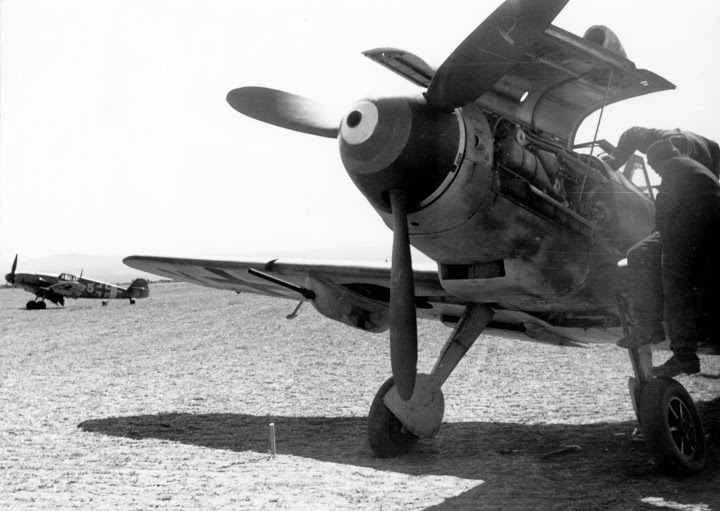 |
|
Slovak Bf 109 G2 R6 |
The preparations for the insurrection started in March 1944, with Lieutenant Colonel Ján Golián taking the command of the uprising. Weapons and ammunition were stockpiled in various places across the eastern and central Slovakia, and there was notable increase of partisan activity in the area. The plan was to not only seize control of as large part of the country as possible, but also to capture and hold Carpathian mountain passes on eastern Slovak border - this would allow the advancing Red Army to attack the rear areas of German forces in eastern Carpathians through Slovakia, forcing the Germans to surrender and sparing Slovakia from destruction caused by prolonged fighting. This goal was to be achieved by two divisions of Eastern Slovak Army, led by Colonel Viliam Talsky. Golián estimated, that only about 20% of Slovak army officers are still loyal to the government, thus he did not expect any significant obstacles in launching of the insurrection.
However, increased partisan activity alarmed the Slovak government, as the loyalist security forces were unable to suppress the partisans. After 30 German soldiers were killed in Martin by partisans on 27th August, 1944, the German envoy in Bratislava, the Slovak capital, requested German military intervention in order to stabilize the country. About 40 000 German soldiers, including several elite Waffen-SS units, entered Slovakia on 29th August, 1944. Golián did not not expect the presence of German army, but it was too late to stand down. On 29th August at 20:00 hours, Golián sent a coded message to all units to begin the uprising. The next day, rebel forces secured Banská Bystrica as main headquarters. More than 47 000 rebel soldiers were mobilized in central Slovakia (this number eventually rose to 60 000) and a number of tanks and armoured vehicles were confiscated, including LT-38, LT-35 and LT-40 light tanks as well as several German tanks and artillery pieces. Golián estimated, that his forces could resist the Germans for up to two weeks.
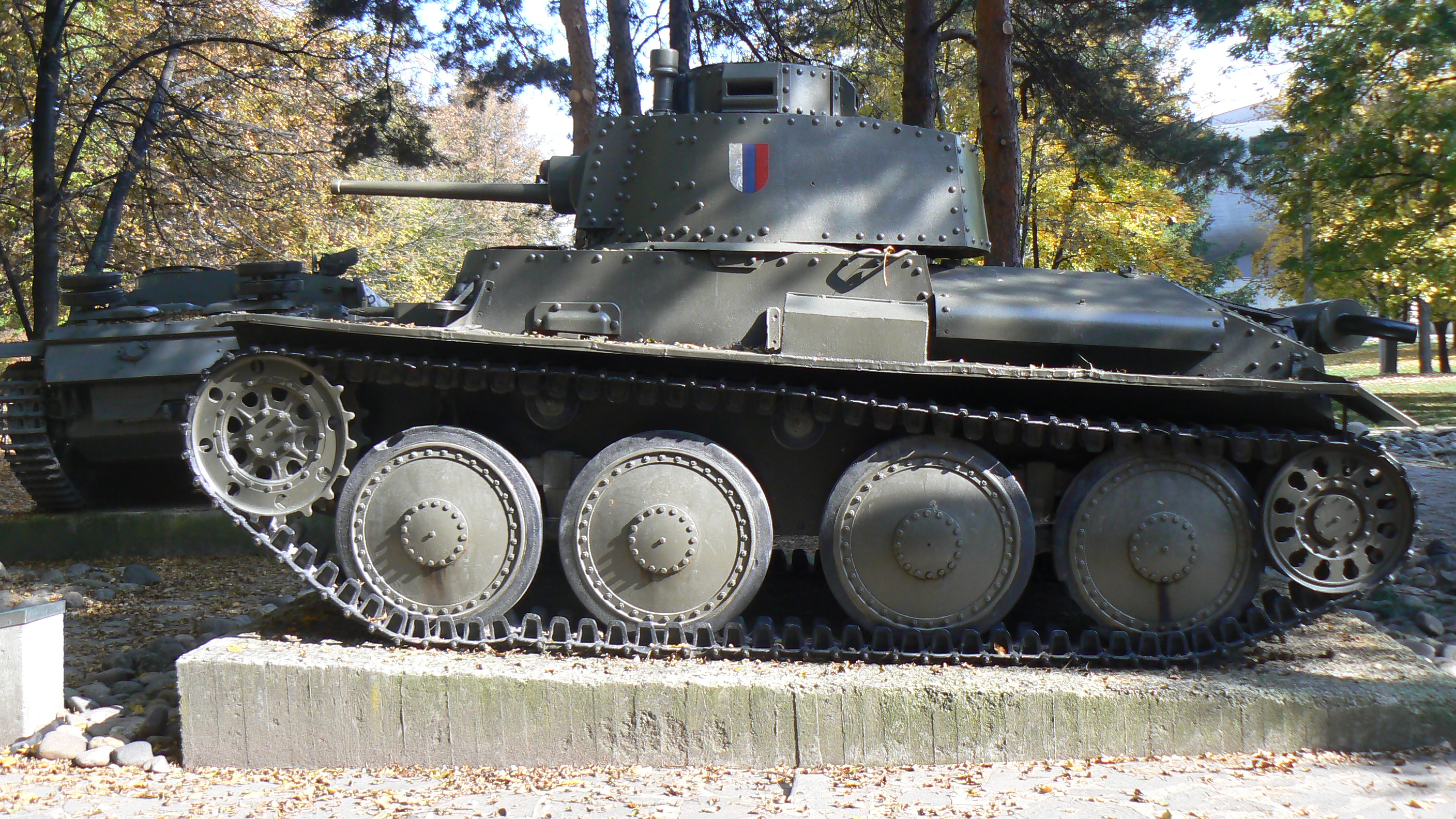 |
|
LT. vz. 38 (Pzkpfw 38(t)) |
However, in a twist of fate, Colonel Talsky hesitated when the order to begin the uprising was given, and instead of mobilizing the Eastern Slovak Army and seizing the mountain passes, he flew to Poland to consult over situation with Soviet Field Marshal Konev. His two divisions were left leaderless and in chaos, and were both quickly disarmed by advancing Germans without any resistance. The rebels thus lost their two most heavily armed units, and the crucial mountain passes were seized by Germans. Also, all Slovak Air Force squadrons positioned on eastern Slovakia left the country and landed in Soviet-controlled territory, leaving only a handful of aircraft (less than 40) behind. These were organized in a so-called “Combined Squadron” (“Kombinovaná letka”), but only four of them were modern Bf 109 fighters (two Bf 109 G-6’s and two older Bf 109 E-4’s), with the rest either obsolete (such as Avia B.534 biplane fighters) or not suited to combat (training or liaison aircraft).
By the 10th of September, rebels seized control of large area in central and eastern Slovakia, including two airfields - Tri Duby and Zolná. Especially Tri Duby was an airfield of strategic importance, as its runway enabled the Soviets to send transport planes with supplies and ammunition. The situation in the air was critical at first, but changed between 15-17th September, when 1st Czechoslovak Independent Aviation Regiment, equipped with Lavochkin La-5FN fighters, landed in Zolná. Another Czechoslovak unit, 2nd Czechoslovak Parachute Brigade also arrived in 25th September - these two Czechoslovak units were integrated into rebel forces, and the whole rebel army was renamed the 1st Czechoslovak Army in Slovakia.
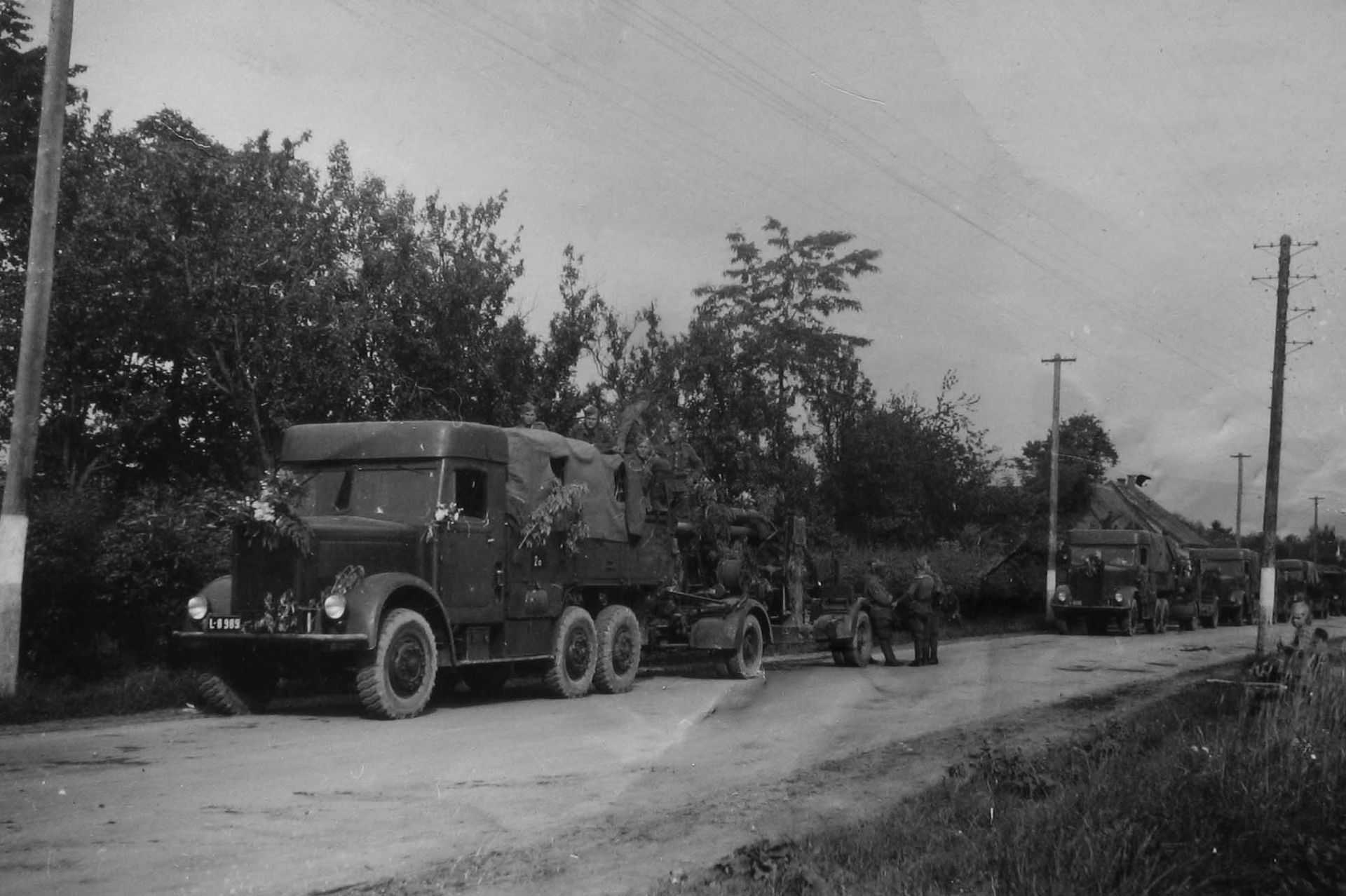 |
|
Rebel convoy of Slovak army vehicles dragging anti aircraft canons |
However, the Red Army was unable to provide support for the rebels in time, and the Soviet attempt to break through Dukla Pass (one of the passes that was planned to be held open by the Eastern Slovak Army) on 10th September resulted in heavy losses and stalemate. Communist partisans, operating in Slovakia, often confiscated supplies and air drops intended for the rebels, which then suffered from a lack of weapons, ammunition and supplies. Partisans were also operating independently of the 1st Czechoslovak Army command, thus preventing any coordination. Diplomatic chaos soon ensued, as the Czech exile government, Soviet partisans and various Slovak groups were arguing over control of the uprising, with the requests of Golián (which was later relieved by General Rudolf Viest) to restore coordination being fruitless. Meanwhile, Germans launched a major offensive starting on the 17th October with more than 35 000 German soldiers advancing from Hungary. At the same time, Stalin ordered his forces to focus on Hungary, Austria and Poland instead, leaving the uprising to their own fate.
At the end of October, German troops had recaptured the major portion of central Slovakia. On 27th October, 1944, the rebel headquarters in Banská Bystrica was evacuated prior to its fall, and the remaining rebel forces withdrew to mountains. Golián and Viest were forced to escape, but both were captured in November, and were executed soon after. As a retaliation for the uprising, German special Einsatzgruppen units unleashed a terror campaign including the razing of several villages and mass executions of civilians. The remnants of the rebel forces resorted to guerilla warfare - the uprising was defeated, but these guerilla units managed to hold up large German forces, which could not be utilized anywhere else. Slovakia was eventually liberated by the Red Army during the spring of 1945, with Bratislava captured on 4th April 1945.
Author: Jan “RayPall” Kozák
In one of the following Updates, we will include Slovak Insurgent
Air Force insignia & marking of the Slovak armoured forces:
Decal made by Branislav "InkaL" Mirkov & Colin 'Fenris' Muir
The War Thunder Team
